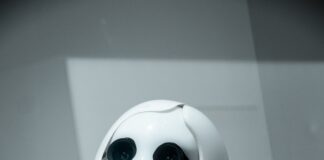In today’s rapidly evolving fashion industry, understanding how AI will change the fashion product launches is no longer optional—it’s a necessity for brands aiming to stay ahead. The influence of artificial intelligence is transforming everything from product ideation to marketing strategies, making it crucial to grasp how AI will change the fashion product launches in practical, measurable ways. For designers, marketers, and retail leaders, recognizing how AI will change the fashion product launches can mean the difference between thriving in a competitive market or falling behind. This article explores ten key areas where AI is reshaping the launch process, offering a detailed roadmap for professionals looking to adapt.
1. AI-Driven Market Research for Launch Planning
AI is revolutionizing market research by enabling brands to collect, process, and interpret consumer data at an unprecedented scale. Instead of relying on outdated surveys or focus groups, companies can now use AI-powered analytics tools to scan millions of data points from social media, online searches, and e-commerce behaviors. This means that product launches can be informed by real-time trends and consumer sentiment. The precision offered by AI ensures that every product release aligns with the desires of target customers, increasing the likelihood of a successful launch.
2. Predictive Trend Forecasting
Trend forecasting used to be a slow process dependent on industry experts’ intuition. AI has transformed this by scanning global fashion publications, streetwear images, and influencer content to predict what styles will become popular months in advance. By identifying patterns that human eyes might miss, AI allows brands to launch products that are not only current but ahead of the curve. This predictive capability minimizes the risks associated with launching items that may not resonate with consumers.
3. Automated Design Concept Generation
Generative AI tools are becoming an essential part of product development in fashion. These systems can produce dozens or even hundreds of design variations in minutes based on specific criteria such as season, color palette, and material. This allows designers to test multiple ideas rapidly and choose those most likely to succeed in the market. For product launches, this speed and flexibility mean shorter development cycles and the ability to respond quickly to emerging trends.
4. Enhanced Supply Chain Optimization
The fashion supply chain is notoriously complex, but AI brings much-needed clarity. Machine learning algorithms can predict raw material needs, anticipate production bottlenecks, and suggest alternative suppliers if disruptions occur. This ensures that when launch day arrives, products are in the right place at the right time. A smoother supply chain not only improves efficiency but also reduces costs, allowing brands to reinvest in marketing and customer engagement efforts.
5. Personalized Consumer Engagement
AI is enabling brands to create highly personalized marketing campaigns for new product launches. By analyzing past purchases, browsing behavior, and engagement patterns, AI can tailor messages and offers to individual customers. This level of personalization boosts conversion rates and strengthens brand loyalty. For example, an AI-powered system might recommend a new handbag collection to customers who have previously purchased luxury accessories, accompanied by customized styling suggestions.
6. AI-Powered Visual Merchandising
The way products are presented, both online and in-store, plays a critical role in the success of a launch. AI can analyze customer preferences to determine optimal product placements, lighting conditions, and even mannequin styling. In e-commerce, AI can generate realistic product visualizations and 3D try-on experiences, allowing customers to engage with products before making a purchase. This interactive element creates excitement around new releases.
7. Launch Performance Monitoring in Real Time
AI doesn’t just help in preparing for a product launch—it also plays a key role in monitoring performance as it happens. Brands can track real-time sales data, social media mentions, and customer reviews to identify what’s working and what’s not. If a particular product color is outselling others, marketing campaigns can be adjusted instantly to capitalize on the trend. This agility was nearly impossible before AI-driven analytics became widely available.
8. Sentiment Analysis for Public Reception
The success of a fashion product launch often depends on how consumers feel about it. AI-powered sentiment analysis tools scan online platforms for mentions of the product and evaluate whether the tone is positive, negative, or neutral. This information allows brands to make rapid adjustments—whether that means addressing a design flaw or amplifying positive feedback through strategic influencer partnerships.
9. Sustainability Integration in Product Development
Sustainability is no longer a niche concern—it’s a core demand from fashion consumers. AI helps integrate sustainability into product launches by analyzing material sourcing, production methods, and potential waste reduction strategies. By launching products that are both fashionable and eco-conscious, brands can appeal to a wider audience and strengthen their long-term reputation.
10. Competitive Intelligence and Benchmarking
AI tools can scan competitors’ websites, social media, and sales data to identify patterns in their product launches. This intelligence enables brands to position their own launches more effectively, either by filling a market gap or differentiating themselves from similar offerings. Competitive benchmarking also helps companies determine optimal pricing, marketing channels, and launch timing.
Final Thoughts
The role of AI in transforming fashion product launches is profound and multifaceted. From streamlining supply chains to enhancing personalized marketing, AI offers solutions that address nearly every challenge in the launch process. By understanding how AI will change the fashion product launches and actively applying these insights, brands can ensure they not only keep pace with industry evolution but also set new standards for innovation.














